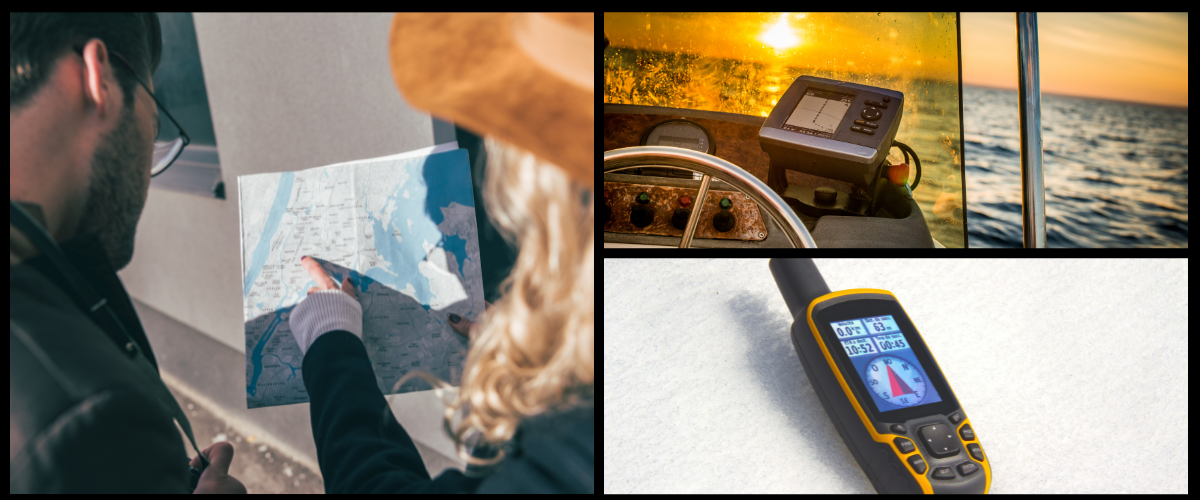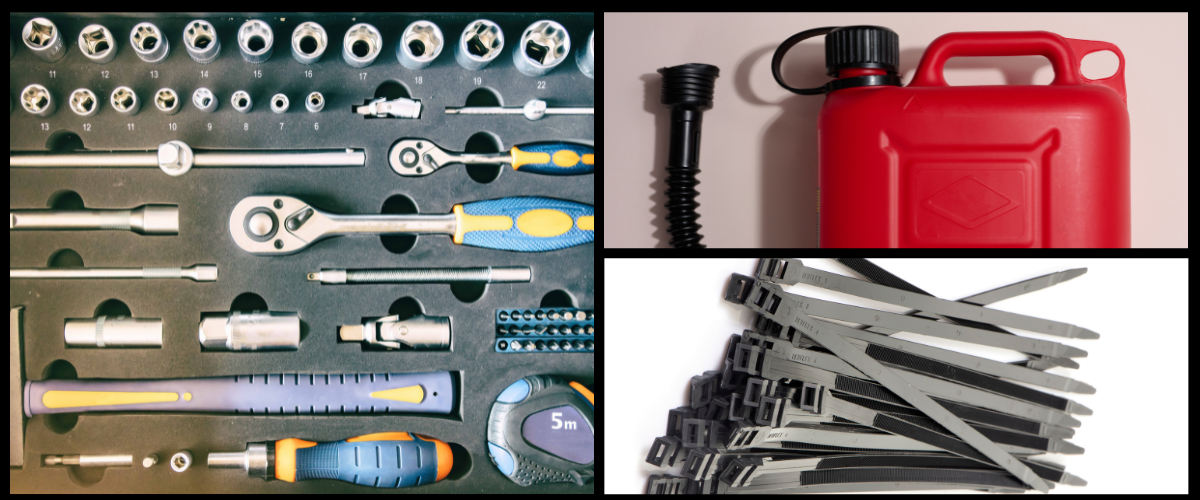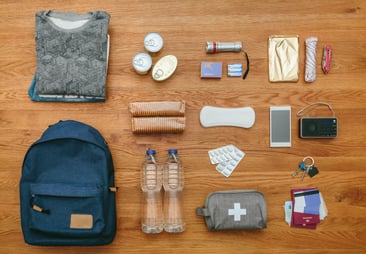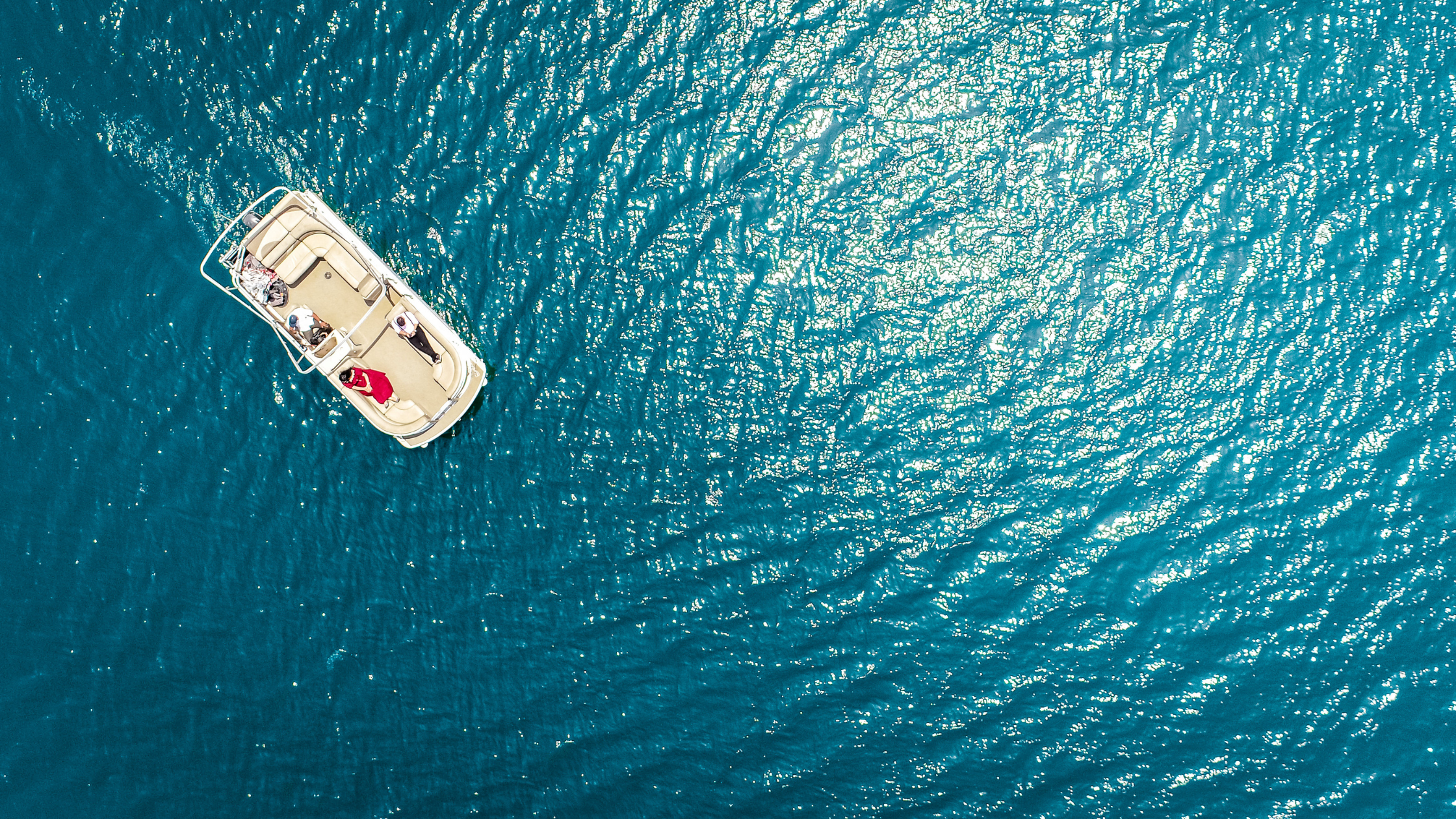Boat Safety Kit Guide
.png)
While you may not be on the water this winter, now is a good time to start prepping for spring boating season. That means putting together the ultimate safety kit.
Everyone (hopefully) knows that it is a USCG minimum equipment requirement for recreational boaters to have certain safety items on board ie. life jackets, fire extinguishers, noise makers, signaling devices, etc. Check with your specific state guidelines as well for any additional requirement they may have. That, however is just the foundation and basics of what you should carry on board to be properly prepared. This guide will provide some a more robust take on how to be prepared for almost any given situation while on the water including spare tools, emergency equipment, and backup devices to potentially prevent and/or respond better to an emergency,
To begin, consider the size of your vessel, number of crew members, and your on-water plan. A fishing kayak and and a charter boat going to the Gulf Stream are going to have very different destination goals, amounts of space, number of people, and risks involved. So, assess your individual situation in order to best assemble the kit that works for you.
Distress Communication
 In the event of an emergency, redundancy in your ability to call for help can not be overstated. You can't be rescued if no one knows you're in trouble. Check out this guide to distress communication devices.
In the event of an emergency, redundancy in your ability to call for help can not be overstated. You can't be rescued if no one knows you're in trouble. Check out this guide to distress communication devices.
- Cellphones
Although convenient and the first thing you're probably going to pull out, a mobile phone can die, fall in the water, or just lose signal. There are several great waterproof/floating cases on the market (Like this one), as well as several affordable portable external charging batteries that fit in your jacket pocket. Having a membership with someone like Seatow, who can be just a short phone call away, will save you a lot of money and heartache...but only if your phone works!
- VHF radios
A basic marine VHF radio is affordable and could be the difference between being rescued and being stuck out at sea. Having one with Digital Selective Calling (DSC) can be life saver if you don't know where you are, because with one button it allows mariners to instantly send an automatically formatted distress alert to the Coast Guard or other rescue authority anywhere in the world. Digital selective calling also allows mariners to initiate or receive distress, urgency, safety and routine radiotelephone calls to or from any similarly equipped vessel or shore station, without requiring either party to be near a radio loudspeaker.
- Two Way Satellite communicators
If you plan on sailing or motoring out of range of cell phone or VHF signal, consider adding an EPIRBs or PLB to your communications kit. This is a last resort emergency beacon in the case of an emergency
Navigating
 Have a backup system for navigation (or several), especially if you don’t carry paper charts. It can be as simple as downloading navigation apps on your devices and computers, or, even better, buy a stand-alone waterproof handheld unit to keep on the boat. Paper charts, however, are also good to have aboard.
Have a backup system for navigation (or several), especially if you don’t carry paper charts. It can be as simple as downloading navigation apps on your devices and computers, or, even better, buy a stand-alone waterproof handheld unit to keep on the boat. Paper charts, however, are also good to have aboard.
If you don't have (or know how to read) a paper chart, it may be a good idea to to have several back-up navigation systems. There are several apps you can download to your phone, but there are also on-board and handheld waterproof units that you can purchase as backups.
Backup Power & an Anchor
One of the worst sounds you can hear while out on the water is that of silence - the sudden lack of sound or decaying growl of your engine. A failed engine can lead to a number of emergency situations. Nearby structures, breaking waves, or intense currents are all hazards that become especially dangerous when you lose power. While having a anchor and an anchor line to at least hold you in place is absolutely necessary, having a source of secondary propulsion can also save you and your vessel. A secondary outboard, a trolling motor, or at the very least, a set of oars should be kept on board in the case of a failed engine.
Tools & spare parts
 Not having a toolkit onboard can turn a simple fix into an impossible task, leaving you stranded. Putting together a dedicated toolkit for your vessel has saved many boaters from having to call on a tow service or the Coast Guard. Simple fixes that just require the right tool are plentiful if you spend enough time on your boat. Below are just a few of the basics that could get you out of a bad situation. It is highly recommended that you keep them all in a safe waterproof case/location so that they don't rust.
Not having a toolkit onboard can turn a simple fix into an impossible task, leaving you stranded. Putting together a dedicated toolkit for your vessel has saved many boaters from having to call on a tow service or the Coast Guard. Simple fixes that just require the right tool are plentiful if you spend enough time on your boat. Below are just a few of the basics that could get you out of a bad situation. It is highly recommended that you keep them all in a safe waterproof case/location so that they don't rust.
Knife - cutting line from a fouled propeller, stripping electrical wire, cleaning up cracked/frayed hoses.
Multi-tools - Leathermans or Swiss army knives can be super helpful and suffice for other tools.
Spark plug wrench - Assuming you keep spare spark plugs on board.
Adjustable wrench(es) - sized to the smallest and largest diameter fittings on your boat can fix parts that have rattled off or tighten through hull parts that may be causing you to take on water.
Socket set - Be sure to have multiple sized wrenches for the big stuff and hard to reach spots.
Multihead screwdriver. Ideally, carry both short- and long-shaft screwdrivers and screwdriver bits for the types of screws you have. Take note of the different screw heads you may have to deal with.
Needle nose pliers - May be one of the most utilized tools on a boat!
Bolt cutters - For cutting sailboat rigging in the event of a dismasting.
Hammer - For those times when nothing else seems to work (a rubber mallet is nice to have too).
Light - Flashlight, spotlight, headlamps for whatever the scenario may be at night.
Binoculars - Can be helpful for spotting others in distress or navigating
Snorkel and mask - In the case that you need to inspect under the boat if suspect a fouled prop or a puncture to the hull (if you are capable of safely doing so).
Spares & consumables
- Kill switch
- Pull cord
- Spark plug
- Fuel and oil filters
- Extra fuel
- Electrical tape
- Duct tape
- Stainless steel high-quality hose clamps of varying sizes
- Zip ties
- Stainless steel wire
- Spare rope of various diameters and strength
- Batteries for onboard electric devices
Spare bilge pump
It may seem like overkill to carry a spare bilge pump...until your boat is taking on water and either your bilge pump decided today was the day it would stop working, or it can't keep up with the amount of water you are taking on. Every boat should carry a manual bilge pump in addition to their primary bilge pump, or at the very least, a bailing bucket for bailing water. You may additionally choose to carry underwater epoxy for emergency hull repairs, or a universal one-size-fits-all hull plug.
Medical Supplies
Carrying a high-quality marine first-aid kit is a must. This should absolutely, without a doubt, include a tourniquet and you should know exactly how to use it properly as it could save a life! It doesn't hurt to carry motion sickness/seasickness medication and rehydration salts for that friend or guest who said they don't get seasick but then unexpectedly realize that they do, in fact, get seasick...A marine first-aid handbook or app is a good addition.
Survival Equipment
 Everyone believes that it will never happen to them, until it's happening to them. You really never know if and when you will be thrust into a survival situation. In the case of a survival situation, a rescue team may hours or even days to reach you, particularly if weather conditions are poor. It may save your life one day to be prepared to spend a full day and night (or longer) outdoors in the marine environment. Equipment may include:
Everyone believes that it will never happen to them, until it's happening to them. You really never know if and when you will be thrust into a survival situation. In the case of a survival situation, a rescue team may hours or even days to reach you, particularly if weather conditions are poor. It may save your life one day to be prepared to spend a full day and night (or longer) outdoors in the marine environment. Equipment may include:
- Tarp or heat reflective emergency blanket
- Spare water and food
- Sun protection
- Fire-making supplies
- Warm dry clothing
Once you've laid out everything you need, it's important to create an inventory to keep up with items that may get used each season and need to be replenished or replaced. Batteries and lightbulbs can expire, and tools can become rusty despite best efforts to keep them from corroding. Make sure everyone on board is aware of where everything is located and how to use each item. It's good to encourage boating safety classes like the one that we offer each season, as well as learning First-Aid and CPR. Being overly prepared will ensure you and your passengers' safety as well as give you more of a peace of mind when it comes time again to get out on the water.
If you have questions or need recommendations for resources when it comes boating safety, please don't ever hesitate to call one of our marine insurance agents. You can reach us at 910-762-8551 or by email at insurance@wellsins.com.
Also check out these resources for safety kits:
Marpac Pre-Packaged USCG Compliance and Safety Kits


